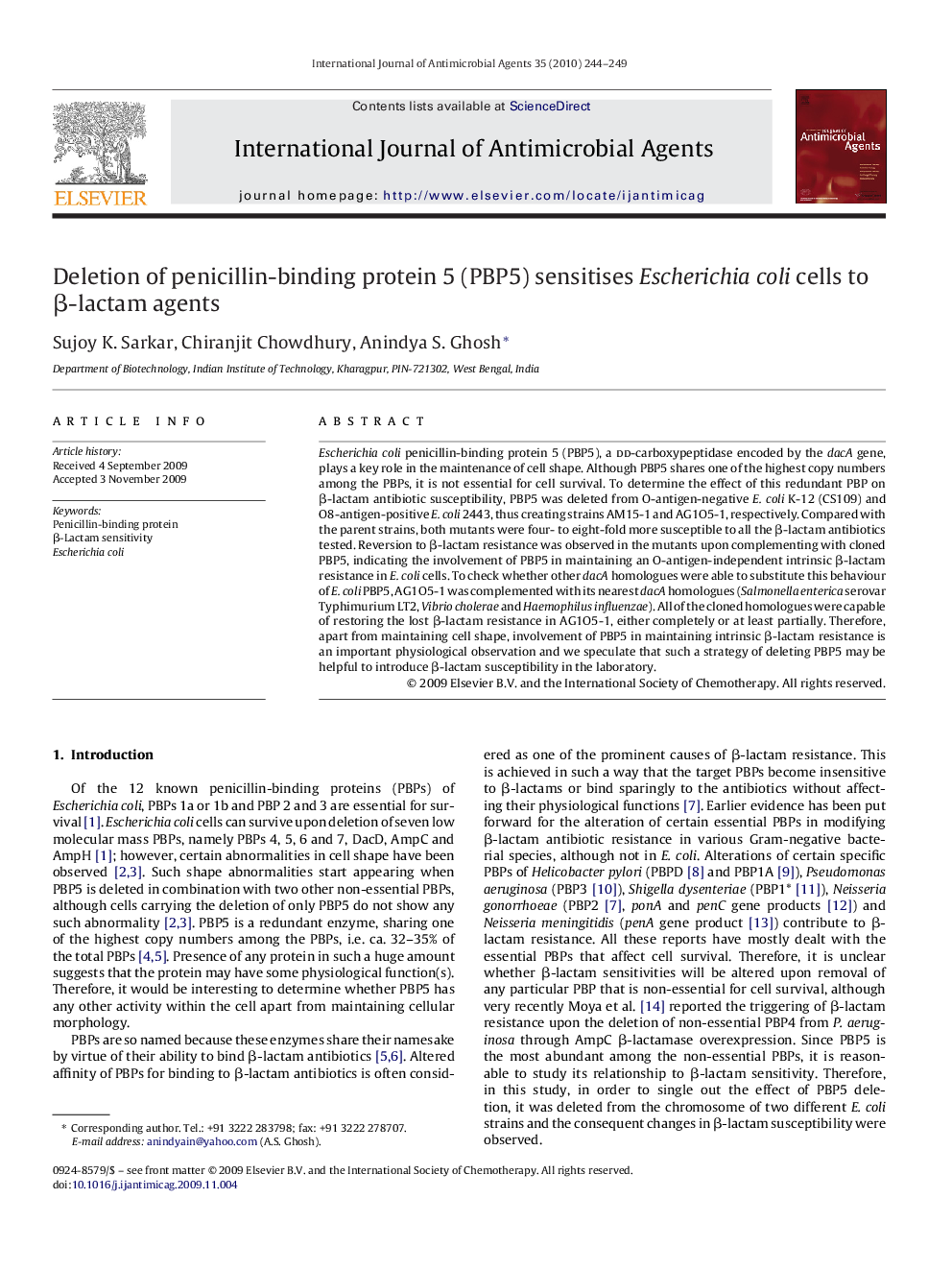| کد مقاله | کد نشریه | سال انتشار | مقاله انگلیسی | نسخه تمام متن |
|---|---|---|---|---|
| 3359846 | 1591839 | 2010 | 6 صفحه PDF | دانلود رایگان |

Escherichia coli penicillin-binding protein 5 (PBP5), a dd-carboxypeptidase encoded by the dacA gene, plays a key role in the maintenance of cell shape. Although PBP5 shares one of the highest copy numbers among the PBPs, it is not essential for cell survival. To determine the effect of this redundant PBP on β-lactam antibiotic susceptibility, PBP5 was deleted from O-antigen-negative E. coli K-12 (CS109) and O8-antigen-positive E. coli 2443, thus creating strains AM15-1 and AG1O5-1, respectively. Compared with the parent strains, both mutants were four- to eight-fold more susceptible to all the β-lactam antibiotics tested. Reversion to β-lactam resistance was observed in the mutants upon complementing with cloned PBP5, indicating the involvement of PBP5 in maintaining an O-antigen-independent intrinsic β-lactam resistance in E. coli cells. To check whether other dacA homologues were able to substitute this behaviour of E. coli PBP5, AG1O5-1 was complemented with its nearest dacA homologues (Salmonella enterica serovar Typhimurium LT2, Vibrio cholerae and Haemophilus influenzae). All of the cloned homologues were capable of restoring the lost β-lactam resistance in AG1O5-1, either completely or at least partially. Therefore, apart from maintaining cell shape, involvement of PBP5 in maintaining intrinsic β-lactam resistance is an important physiological observation and we speculate that such a strategy of deleting PBP5 may be helpful to introduce β-lactam susceptibility in the laboratory.
Journal: International Journal of Antimicrobial Agents - Volume 35, Issue 3, March 2010, Pages 244–249